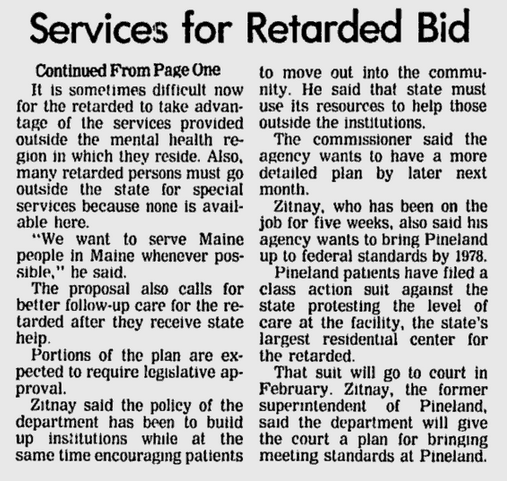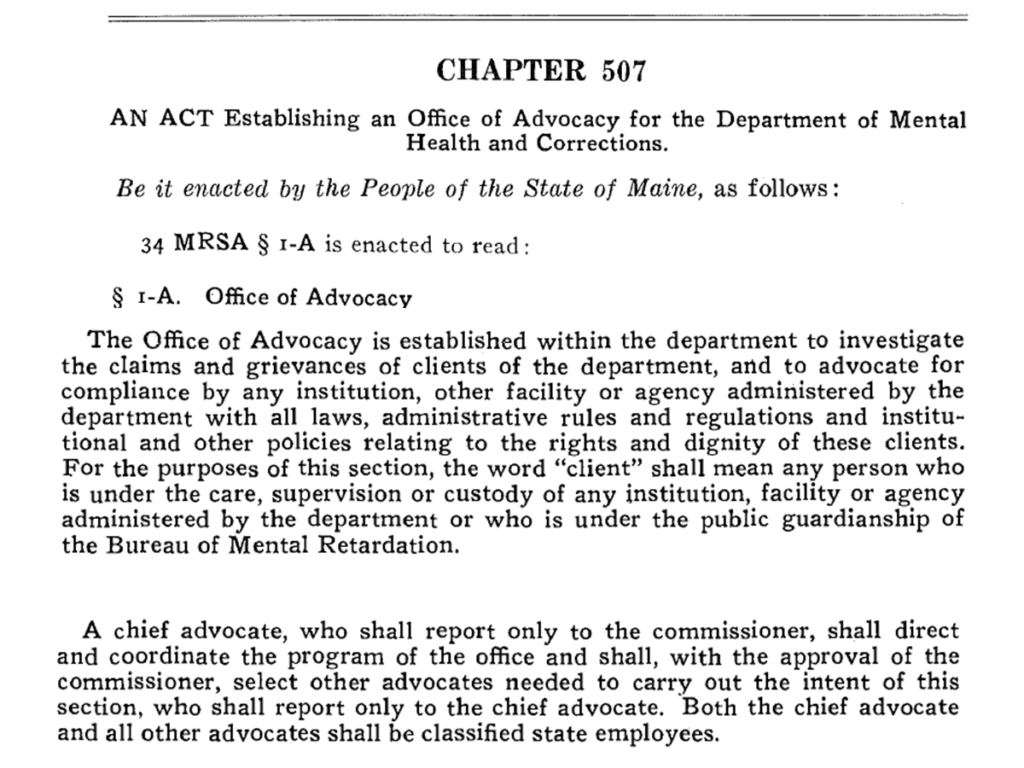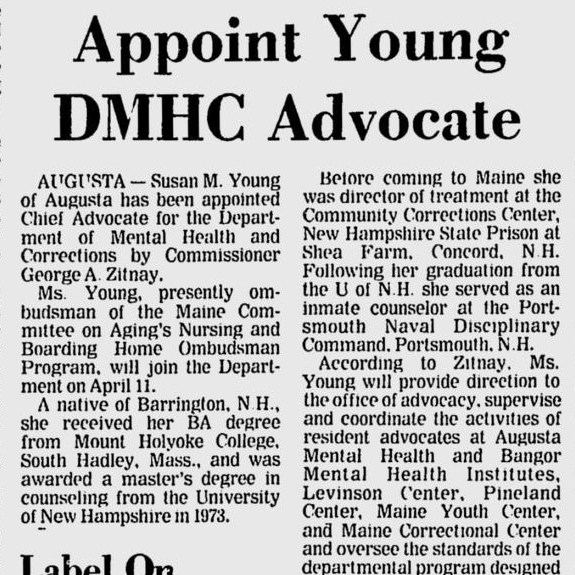The years while the lawsuit worked its way through the courts were marked by much upheaval and many changes at Pineland. In August of 1975, one month after charges were filed, George A. Zitnay was hired as superintendent – one year later he moved into state government as Commissioner of Mental Health and Corrections. In both roles, he called himself a “strong supporter of normalization” (Lewiston Daily Sun, October 16, 1975), and said that “the policy of the department has been to build up institutions while at the same time encouraging patients to move out into the community” and that the “state must use its resources to help those outside the institutions” (Lewiston Daily Sun, November 23, 1976).


Policymakers also began to recognize that residents of Pineland and other State institutions deserved support to speak their minds about the conditions they lived in. An advocacy program was started in 1972 in the two mental health hospitals and expanded to the rest of the institutional system in 1973. In 1975, the legislature codified these changes by creating an “Office of Advocacy” in statute.



According to the Maine State Annual Report, in 1977 and early 1978, ahead of final negotiations that led to the end of the lawsuit and the beginning of the Pineland Consent Decree, many policies were beginning to be implemented in order to give Pineland residents more autonomy, choice, and opportunities, including creating an individualized program plan for each person, providing program services to 50% of residents, and giving 75% of residents a “private or semi-private bedroom area”.



